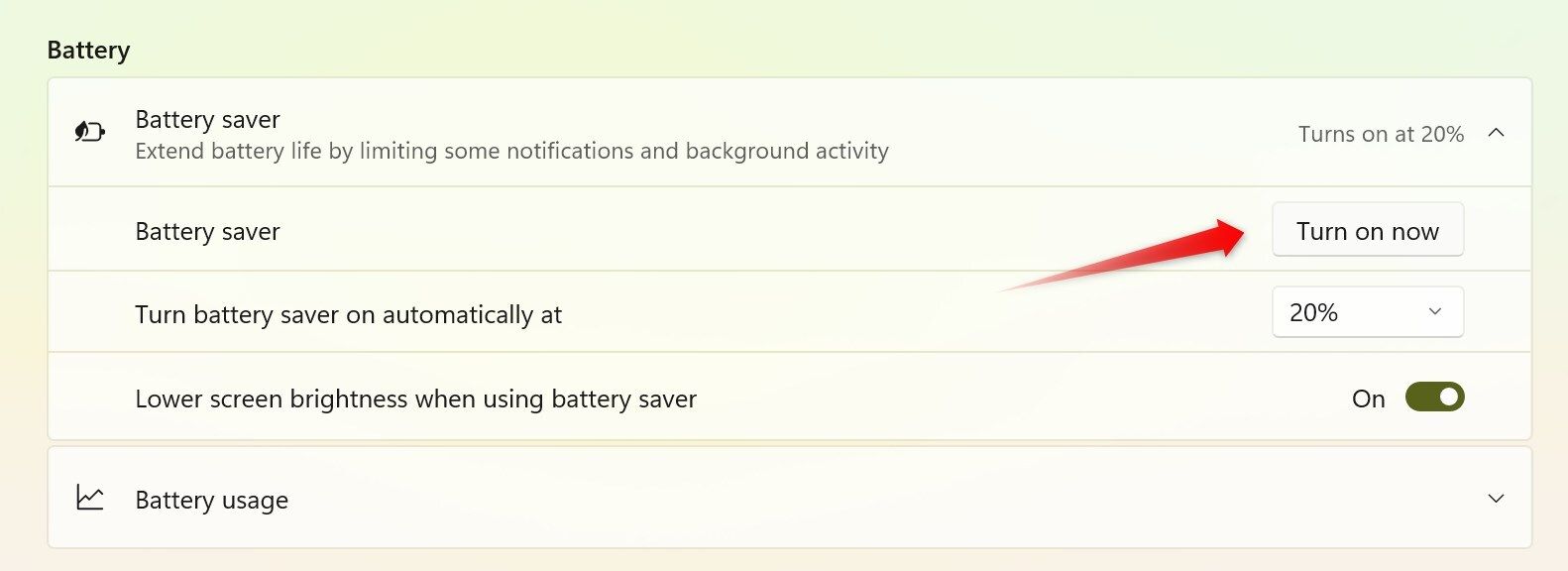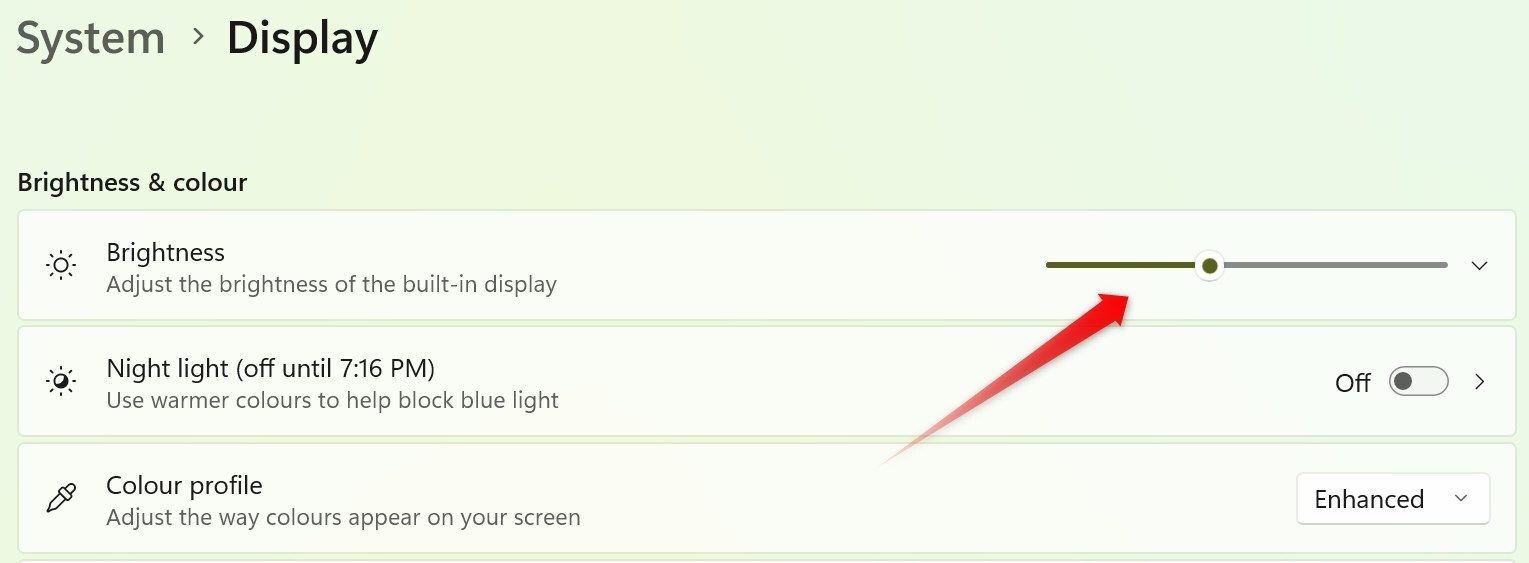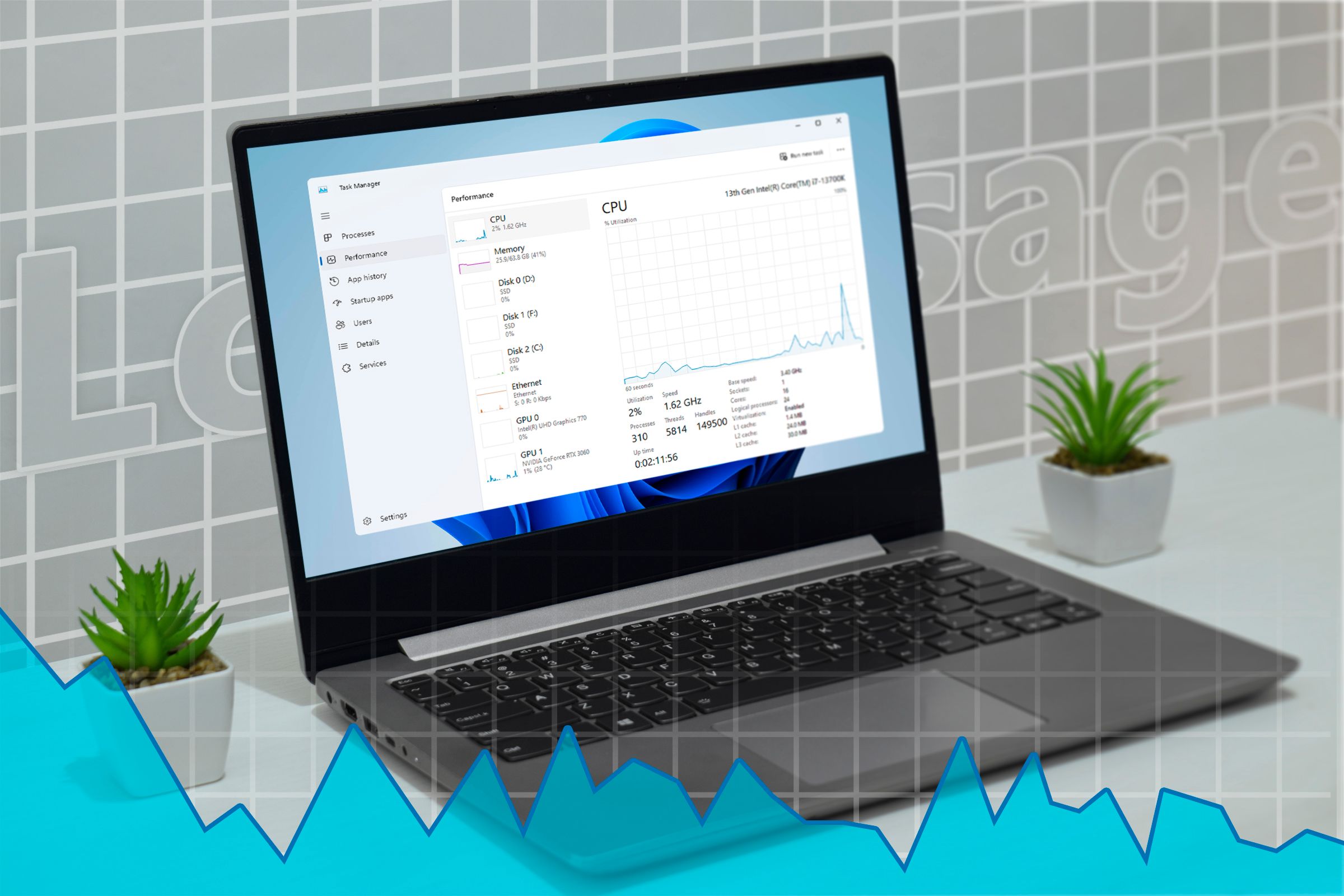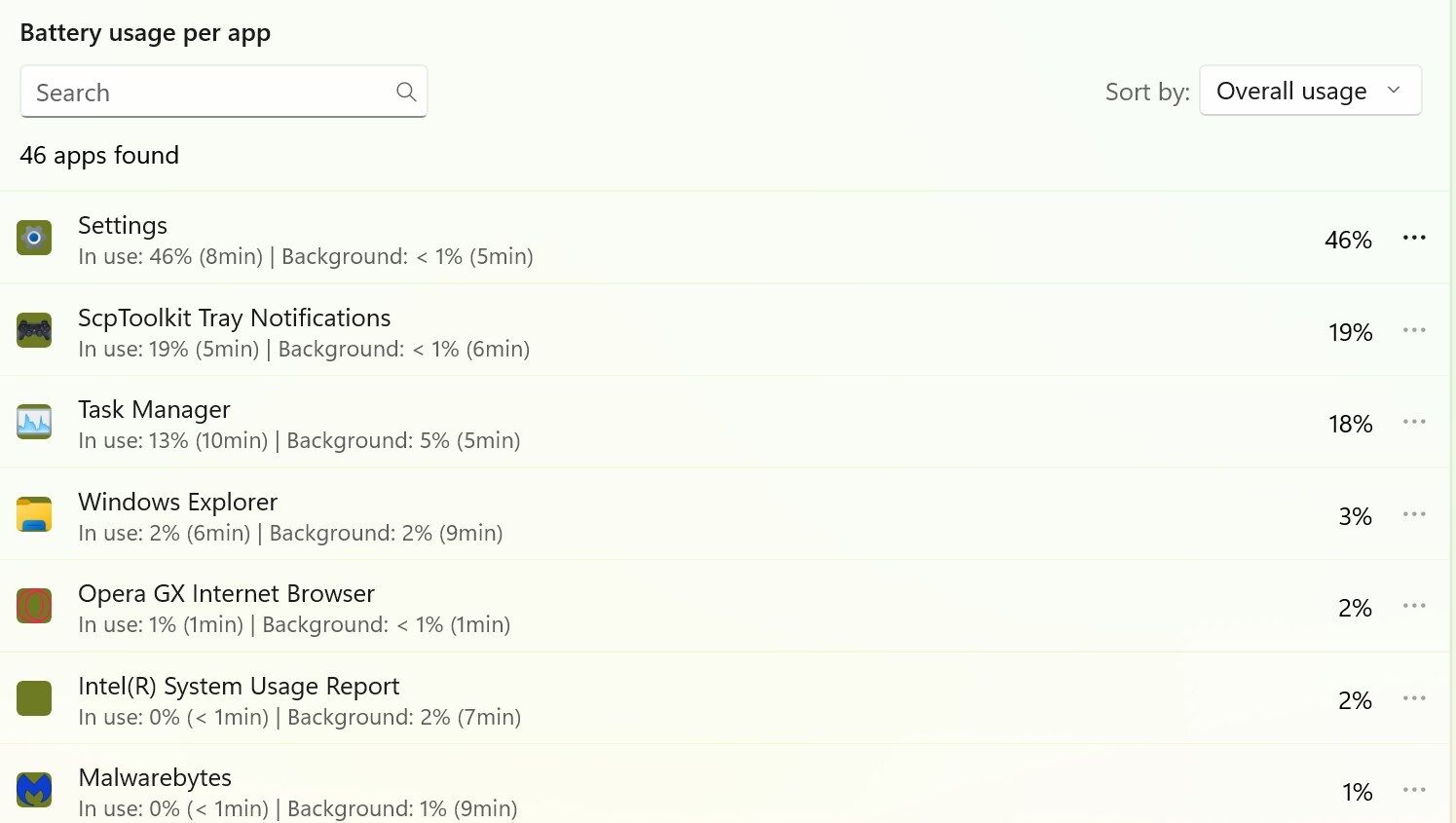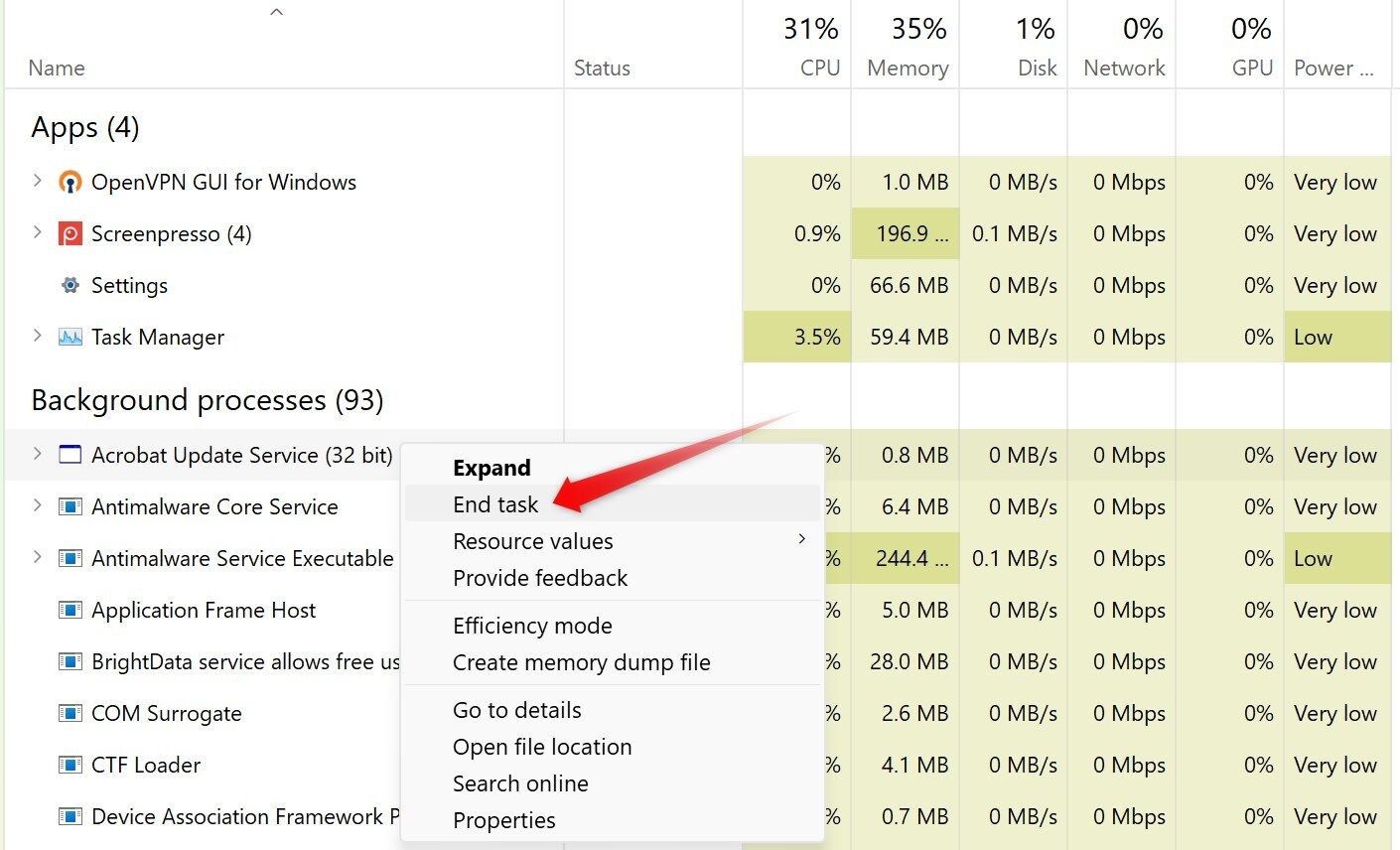Does your Windows laptop’s battery drain as quickly as water escaping through a leak? If that seems familiar, you may not be making full use of the built-in features in Windows that help reduce battery consumption. Here’s how you can make your laptop’s battery last longer on a single charge.
5
Turn On Battery Saver Mode
One simplest yet often overlooked way to reduce battery consumption is to use Battery Saver mode. When activated, this feature automatically minimizes background activity, dims screen brightness, and restricts power-intensive processes, which helps reduce battery consumption and makes the charge last longer.
Battery Saver mode turns on automatically when your device’s battery drops below a certain threshold, typically 20%. However, you can also enable it manually to conserve battery for an extended period. To do this, open the Settings app, navigate to the “System” tab, and go to “Power & Battery.” Here, expand the “Battery Saver” menu and click on “Turn On Now.”
You can also toggle the Battery Saver mode on or off directly from the system tray for quick access.
4
Reduce Screen Brightness
The display is one of your device’s most power-hungry components, and reducing the brightness indoors or at night can help conserve battery life. However, you need to find a balance—keeping it too low may strain your eyes while setting it too high can drain the battery faster. You can keep it at about 40%, which is what I do unless that’s too dim for you.
There are multiple ways to adjust the brightness. The quickest method is to use the dedicated brightness function key, usually marked with a sun icon. Just ensure the function key lock is enabled. Alternatively, you can go to Settings > System > Display and use the brightness slider to find a comfortable level.
Some laptops have an adaptive brightness feature that adjusts screen brightness based on ambient lighting conditions. Enable this to manage the brightness level automatically.
3
Set Power Mode to Maximum Efficiency
Windows offers different power modes, which are a set of hardware and system settings that determine how your computer manages power. You can choose Best Performance for maximum system performance at the cost of higher power consumption or Best Power Efficiency to extend battery life with slightly reduced performance.
To reduce power usage, you can set the power mode to Best Power Efficiency. To do this, open the Settings app, navigate to System > Power & Battery, and select “Best Power Efficiency” from the dropdown menu next to Power Mode.
If you notice a decrease in performance, switch to the “Balanced” mode to maintain a good balance between performance and battery consumption.
Alternatively, you can navigate to Control Panel > Hardware and Sound > Power Options and select your desired power plan from the available options.
2
Adjust the Screen Timeout Settings
If you’re like me and often leave your laptop on while stepping away for lunch, a cup of tea, or a short break, you may be unintentionally wasting valuable battery power by keeping the display running. To prevent this, you can adjust the screen timeout settings to reduce the time it takes for your display to turn off when idle.
To modify these settings, open the Settings app and navigate to System > Power & Battery. Expand the “Screen and Sleep” section, then set the “On Battery Power, Turn Off My Screen After” option to 5–10 minutes (or less). This ensures your screen turns off more quickly when inactive, helping to conserve battery life.
Be careful not to set the timeout too low, or your display may turn off even when you step away for just a few minutes. Adjust it to a suitable duration.
1
Stop Background Apps and Services
When installed, some apps automatically gain permission to run in the background to send notifications, check for updates, sync data, or perform other tasks. Even when you’re not actively using them, they continuously drain your laptop’s battery. Identifying and turning off such background processes can help conserve power.
To check which apps consume the most battery, open Settings and navigate to System > Power & Battery. Expand the “Battery Usage” section and scroll down to see a list of apps ranked by battery consumption. If you notice an app you rarely use consuming a significant amount of battery, it may have background processes running that need to be closed.
To stop these processes, open Task Manager, click the “Name” column, locate the background processes related to that app, and close them.
How you optimize your device settings directly impacts your laptop’s battery usage. I’ve shown you how I adjust power modes, manage background apps, and modify other settings to minimize unnecessary battery drain. Now, you can apply these small changes, which will collectively help you get the most out of every charge.


